Fitted-back English Gown in Pink Worsted,
1775-1785
Colonial Williamsburg, June 2013.
Because Battle Road takes place so early in the New England spring, it’s typically pretty chilly standing outside all weekend long, especially since we don’t have the luxury of our own campfire to huddle around to keep warm. I decided a wool gown was thus in order for the event, and I finished this one just in the nick of time the evening before. The number of visitors over the weekend, however, prevented me getting more than one photo of the gown during Battle Road itself, so its Threaded Bliss post had to wait until the gown’s second wearing, which happened in weather that fell at the complete opposite of the temperature spectrum – Under the Redcoat this past weekend!
Colonial Williamsburg, June 2013.
The pattern: The bodice and sleeves were draped on me by Ashley at the gown workshop last November. I worked the back pleats to reflect the narrower, more curved shape popular from the late 1770s into the very early 1780s.
Colonial Williamsburg, June 2013.
Detail of the back pleats.
Innards of the gown's top half. The armscyes are not finished and the top of the
pleated skirt panels are not enclosed in the lining, features which were
quite common to 18th-century gowns.
pleated skirt panels are not enclosed in the lining, features which were
quite common to 18th-century gowns.
Because I didn’t have Ashley at home to drape a brand new bodice and sleeves specifically for this gown, I used the pieces she draped at the workshop as my “pattern” for the rest of the top portion (the workshop gown is still waiting for a Threaded Bliss post of its own, so stay tuned for that!). The finished bodice fronts were then fitted to the back and top-stitched down. After the sleeves were set into place, the shoulder straps were cut, arranged, and top-stitched to cover the raw caps of the sleeves.
Detail of the back, with the shoulder strap meeting the back panel pleats.
The gown’s skirts were pleated up next with ¼” pleats and a set of cuffs added, both details in keeping with the specifics of the years for which I was aiming. I also added a set of cotton twill tape ties to drape up the skirts to keep them away from the muddy paths and fields of Battle Road.
Cuffs with detachable linen sleeve ruffles sewn in.
The fabric: A “tropical” weight worsted wool in a lovely rosy pink color, lined in a medium-weight ivory linen. From damp, chilly temperatures in the lower 50s to hot-and-humid 95 degrees, this gown has proven itself quite comfortably versatile, and I really, really like it!
Colonial Williamsburg, June 2013.
Finishing the look: The gown is worn over a linen shift, fully-boned stays, and a linen underpetticoat, and is paired with a matching petticoat. Window-pane checked white linen lawn ruffles, very narrowly hemmed, embellish the ends of the cuffed sleeves. The ruffles are sewn to a cotton tape band and then simply whipped roughly into the lining of the sleeve so that they can be easily removed to be worn with another gown or to be laundered.
Detail of the detachable linen lawn sleeve ruffles.
A printed cotton neck handkerchief (from Burnley and Trowbridge) fills in the low, wide neckline of the gown. I made a tucker of the same window-pane checked linen as the ruffles, but elected to wear the kerchief at both Battle Road and UTR (the first because of the cold, the second because of the sun), so I don't yet have pictures of it with this gown. I also have a matching apron to complete the "suit," so when I wear them all together, I'll be sure to do an updated post!
The apron worn with the gown in the pictures here is a striped cotton gauze with a teeny rolled hem that took forever because of the loose weave of the fabric. In the end, though, it was worth the time and frustration because I like how the very sheer stripes show up against the solid pink background of the petticoat.
Striped cotton gauze apron.
Completing the ensemble is a new hat trimmed with blue/green changeable silk taffeta. The taffeta forms poofs around the crown, with a big, wide bow set to one side. The underside is lined in the same taffeta and the edges of the brim finished with a narrow strip of it. Lining hats that were trimmed but not covered on top was quite popular in the late 1770s and 1780s (as was lining in a contrasting color to a covered top, as seen in one of our inspirations in this earlier post). The inspiration for my hat came from the hat on the left in this John Collett print from 1778 entitled "The Manchester Hero, or Arts Yield to Arms."
"The Manchester Hero, or Arts Yield to Arms," 1778
(mezzotint print after John Collett).
My version of the hat, with the underside lined with the same
blue/green silk with which the top of the hat is trimmed.
blue/green silk with which the top of the hat is trimmed.
Colonial Williamsburg, June 2013.
I decided to add a bit of embellishment by doing poofs around the crown instead of just the plain wrap-around ribbon, poofs being quite common during the same period, and much more interesting to the eye!
Poofs of silk taffeta surround the crown, while a narrow strip finishes the edge of the brim.
Additional photos can be found in this project's flickr set.

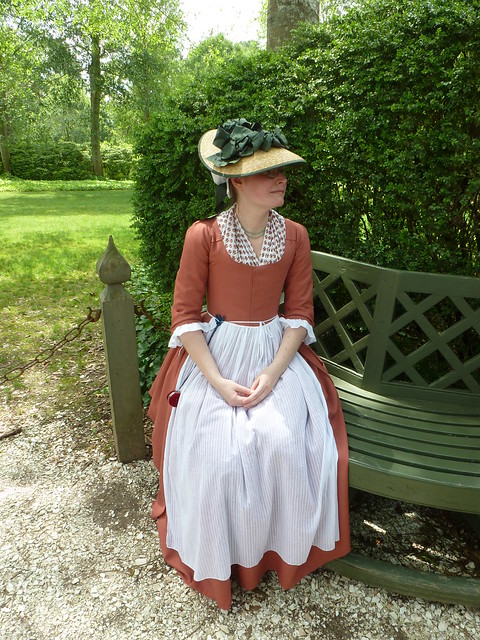
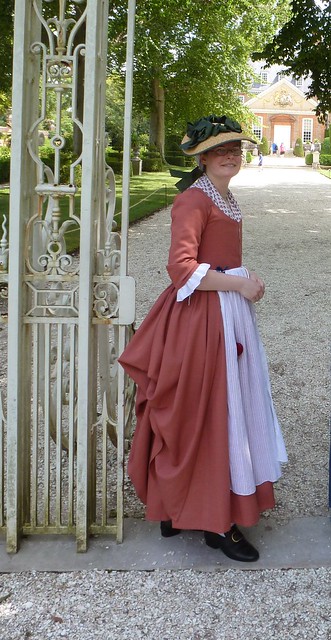

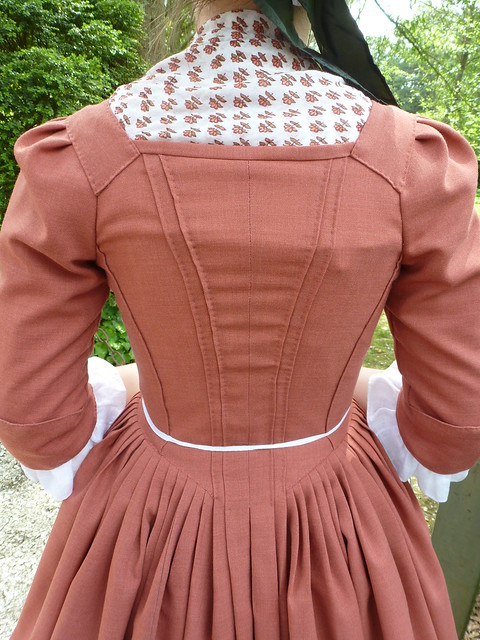
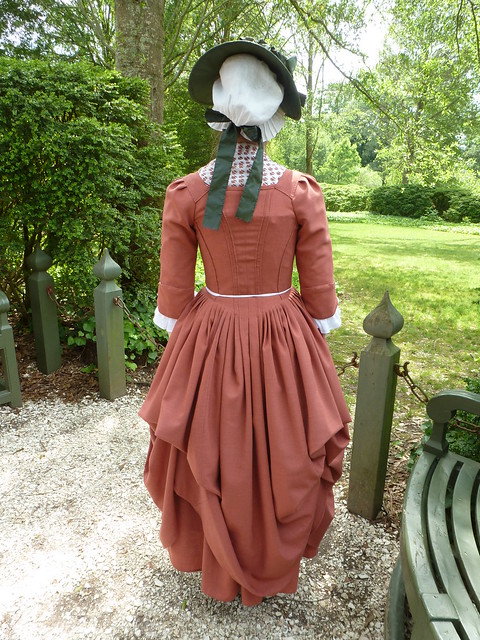
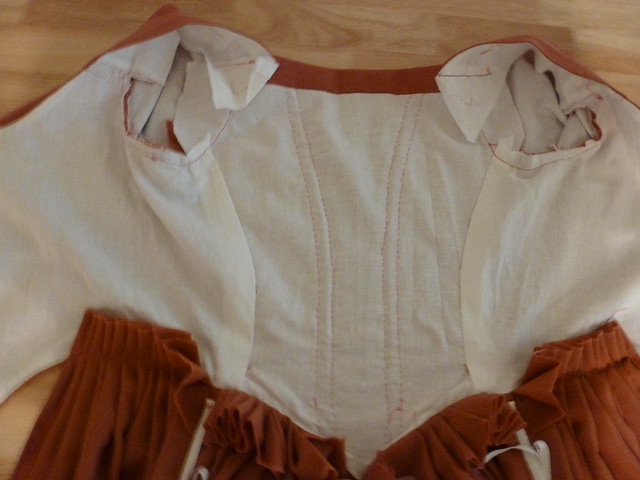
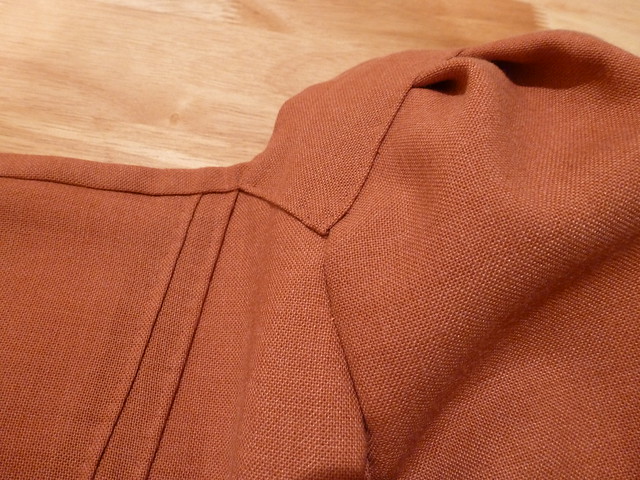
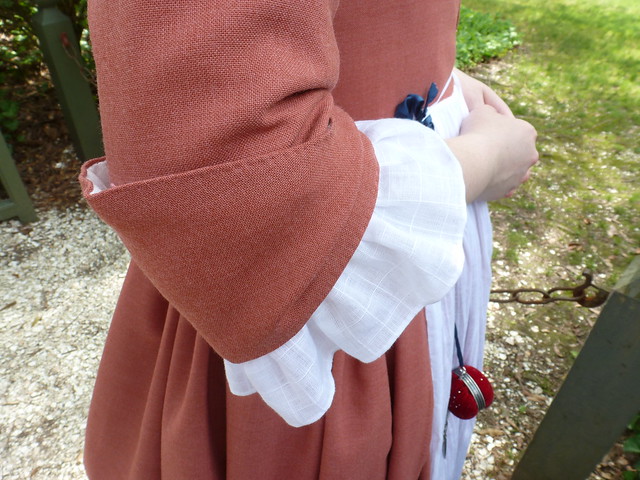
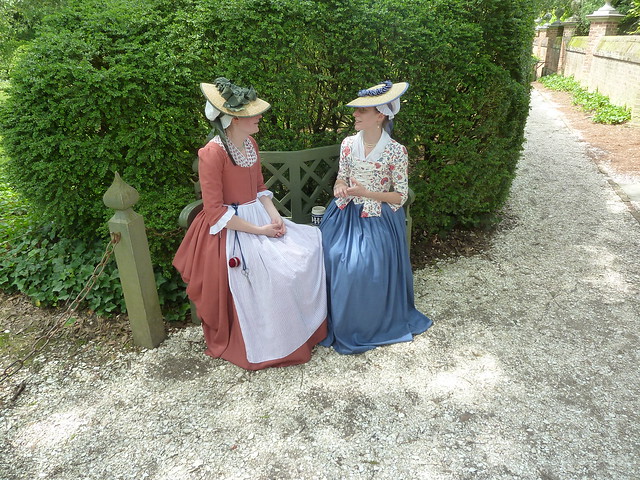
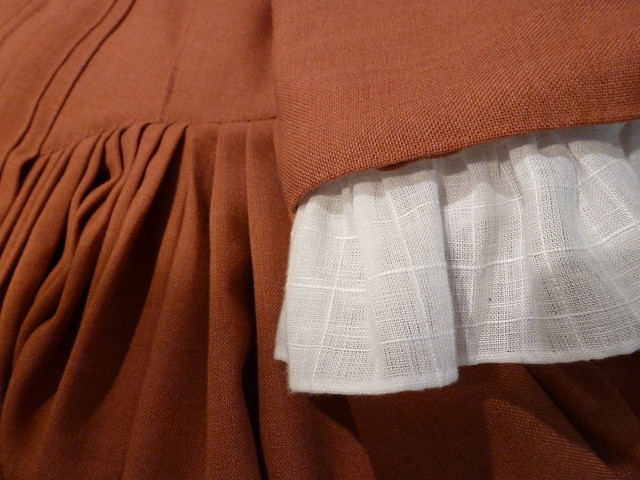


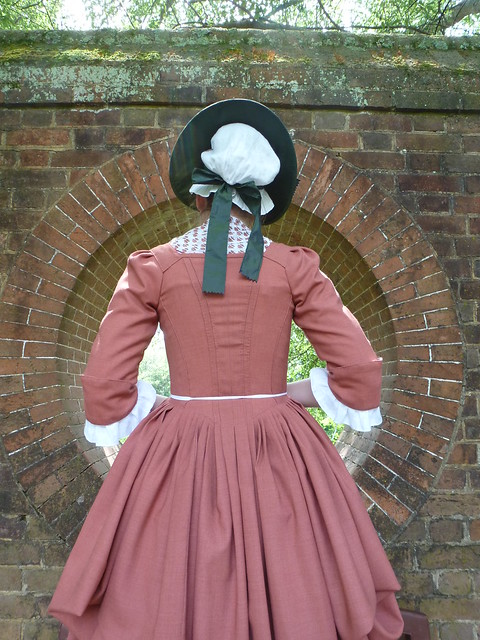
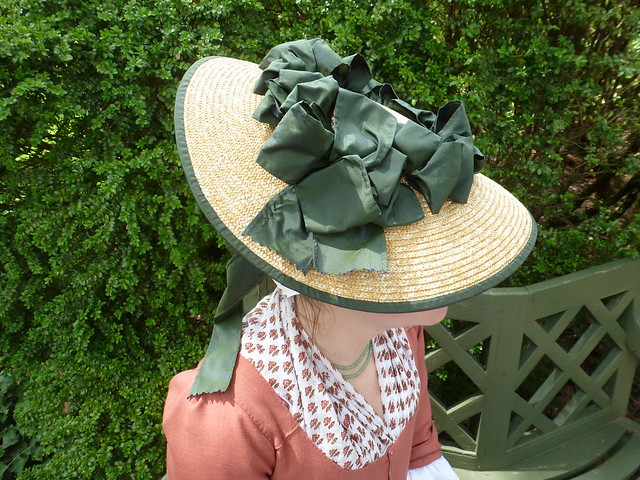
4 comments:
You had mad skills! It's not easy to pull off a wool gown with the proper silhouette, but you've done it perfectly. :-)
Aww, thanks Lauren! I actually don't mind working with wool. This one was slightly more loosely woven than what I usually get, which make it a bit more springy and challenging, but it wasn't too too bad. I just couldn't resist the color, though! :-)
That is just simply amazing! The dress and hat and well... just everything about the outfit look so wonderful. I would have believed it if you'd have come straight from the period itself.
Thank you for your in-depth tutorials! As a Massachusetts resident, I've been to Battle Road, and love the interpretations, especially the clothing. Huzzah!
Post a Comment